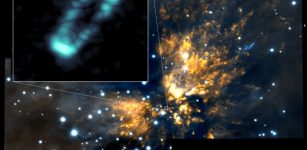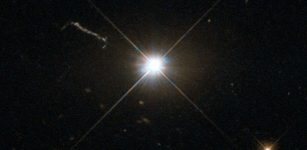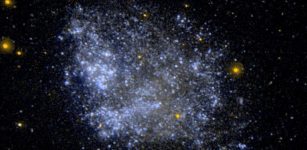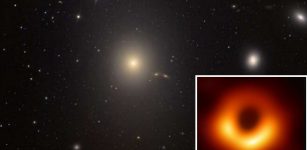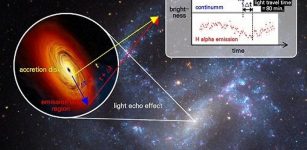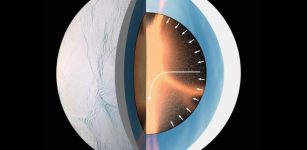New Surprises On Galaxy Organic Molecules Near Black Holes – Revealed By JWST
Eddie Gonzales Jr. – MessageToEagle.com – Research led by Oxford University is the first of its kind to study tiny dust molecules in the nuclear region of active galaxies using early observations from the James Webb Space Telescope (JWST). The study is the first U.K.-led paper to use spectroscopic data from the JWST’s Mid-Infrared Instrument (MIRI) and addresses one of the biggest challenges in modern astrophysics: understanding how galaxies form and evolve.
Maps of the central ∼6″ region of NGC 7469, which includes the AGN and the circumnuclear ring of star formation. Top-left panel: in color and black contours is the JWST/F770W PSF-subtracted image (which mainly traces the 7.7 μm PAH band). Black regions (s1, s2, s3, s4, s5, s6, and s7) correspond to selected circumnuclear zones of NGC 7469. Red and blue regions (o1, o2, o3, o4, o5, and o6) are in the outflow region. The green line represents the orientation of the nuclear molecular gas bar. The gray lines correspond to the approximate outflow region according to the [S IV]λ10.51 μm velocity map (see Appendix B). The white box represents the JWST/MRS ch1 FoV (3.2″ × 3.7″), which is practically identical to the Spitzer/IRS angular resolution. The brown star corresponds to the approximate location of the radio supernova SN 2000ft (Colina et al. 2001). Top-right panel: JWST/MRS 6.2 μm PAH band map derived using a local continuum (see text). Bottom-left panel: [Ar II]λ6.99 μm emission map. Bottom-right panel: 11.3/6.2 μm PAH ratio using local continua (see text). In black are the 6.2 μm PAH band contours. The central region corresponds to this PAH ratio in the nuclear spectrum. All the images are shown on a linear color scale. North is up and east is to the left, and offsets are measured relative to the AGN. Credit: Astronomy & Astrophysics (2022). DOI: 10.1051/0004-6361/202244806
Tiny dust molecules known as polycyclic aromatic hydrocarbons (PAHs) are among the most widespread organic molecules in the universe and important astronomical tools. For instance, they are considered to be fundamental building blocks of prebiotic compounds, which may have played a key role in the origin of life. PAH molecules produce extremely bright emission bands in the infrared region when they are illuminated by stars, enabling astronomers to not only trace star-formation activity, but also to use them as sensitive barometers of the local physical conditions.
This new analysis, led by Dr. Ismael García-Bernete from Oxford University’s Department of Physics, used JWST’s cutting-edge instruments to characterize, for the first time, the PAH properties in the nuclear region of three luminous active galaxies. The study was based on spectroscopic data from the JWST’s MIRI which specifically measures light in the 5–28 micron wavelength range. The researchers then compared the observations with theoretical predictions for these molecules.
Surprisingly, the results overturned those of previous studies that had predicted that PAH molecules would be destroyed in the vicinity of the black hole at the center of an active galaxy. Instead, the analysis revealed that PAH molecules can actually survive in this region, even where very energetic photons could potentially rip them apart. A potential reason could be that the molecules are protected by large amounts of molecular gas in the nuclear region.
However, even where PAH molecules survived, the results showed that the supermassive black holes at the heart of galaxies had a significant impact on their properties. In particular, the proportion of larger and neutral molecules became greater, indicating that more fragile small and charged PAH molecules may have been destroyed. This brings severe limitations to using these PAH molecules to probe how rapidly an active galaxy makes new stars.
“This research is of great interest to the wider astronomy community, particularly those focused on the formation of planets and stars in the most distant and faint galaxies,” said Dr. García-Bernete. “It is incredible to think that we can observe PAH molecules in the nuclear region of a galaxy and the next step is to analyze a larger sample of active galaxies with different properties. This will enable us to better understand how PAH molecules survive and which are their specific properties in the nuclear region. Such knowledge is key to using PAHs as an accurate tool for characterizing the amount of star formation in galaxies, and thus, how galaxies evolve over time.”
The study is published in Astronomy and Astrophysics.
Written by Eddie Gonzales Jr. – MessageToEagle.com Staff


